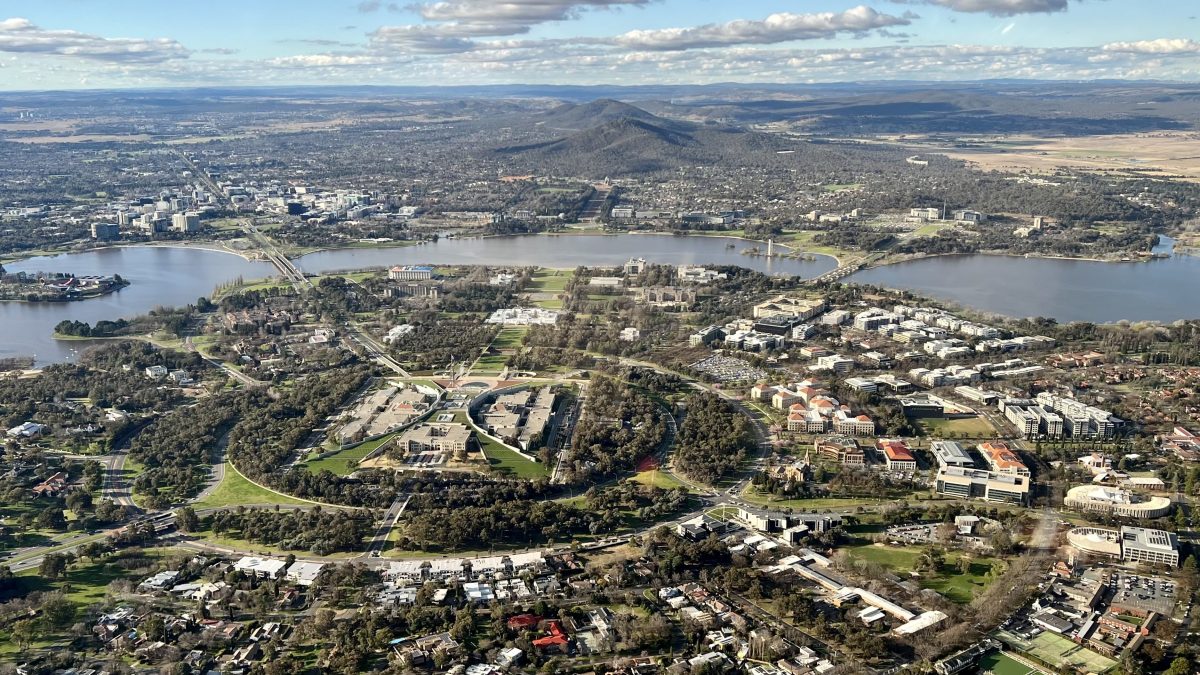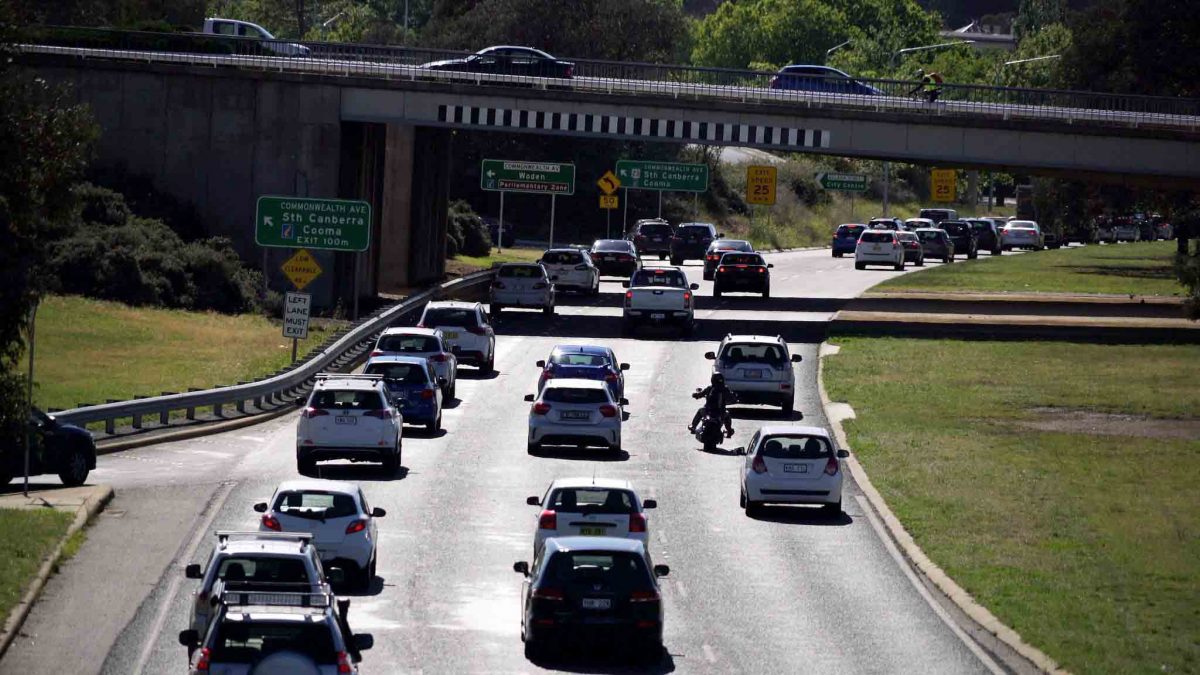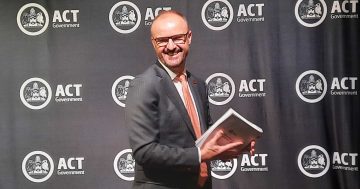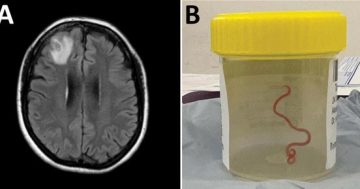
Walter Burley Griffin originally planned for a population of 25,000 in Canberra, but those days are long gone. Photo: James Coleman.
The ACT Government will need to act fast on urban planning to stay ahead of exploding population growth, with new data from the Federal Government’s Centre for Population predicting Canberra will grow by almost 100,000 within the next decade, reaching 550,000 by 2033.
It might not sound like much compared with other cities, but it’s still the equivalent of another Gungahlin and a near-70,000-person jump on the centre’s estimate from 12 months ago.
The 2022 Population Statement, released yesterday (6 January), puts it down to not only a 20,000-person undercount of the ACT’s population in the 2021 Census, but also a recent spike in migration as international students return after two years of COVID-induced border closures.
Natural increase is also expected to be a strong contributor, despite families in the ACT having the fewest children compared to those in the other states and territories.
But with more people comes the challenge of accommodating them. And it’s no news the ACT’s schools, health systems and housing market are already under pressure with a population of more than 454,000.
Expert in urban and regional planning at the Australian National University (ANU) Dr Ed Wensing says the latest predictions will push the ACT’s capacity to the brink.
“The initial strategic planning for the ACT arrived at a threshold of about 500,000 people,” he says.
“The latest population predictions indicate we will reach that figure a little sooner than we thought, so it poses some really important questions for the planners, starting with, ‘Where do we put them?’ And then if you’re going to plan for that sort of increase, you also need to plan for the longer term and the next 500,000 people.”
Dr Wensing says any plan to extend the suburban footprint of the ACT through land-release programs has to be accompanied by substantial upgrades to existing sewerage, water and transport systems.
“There are already limitations on this infrastructure, and if it hasn’t reached capacity already – it certainly will by the time we get to 2030.”

Roads? Where we’re going, we’re going to need a lot more. Photo: ACT Government.
Twice in the space of two months in 2022, Icon Water’s sewerage treatment network struggled to cope with heavy rain and light rail between Gungahlin and Civic is standing-room only during the morning peak.
“These things just aren’t big enough, and with the predictions for climate change and the increasing population, we have to take a serious look at them, and I don’t really see any evidence that we are,” Dr Wensing says.
Chief Minister Andrew Barr says, “there are extensive plans in place for a bigger Canberra” across the areas of housing, transport, education and health and emergency services, despite faster-than-anticipated growth.
“The increase in population will drive further demand for housing – this will need to be met through a combination of planning rezoning and land release – to provide increased social housing and through numerous large-scale build-to-rent projects,” he says.
“There will also be a need for increased transport investment – principally through the purchase of new electric buses, the extension of light rail and increased investment in cycling and walking infrastructure. Some roads will also need duplicating.”
Mr Barr also flags more community healthcare centres will work with the expansion of the Canberra Hospital and the construction of a new northside hospital to share the extra healthcare load.
“New schools and TAFE facilities will need to be built, especially in growth areas like Molonglo, Ginninderry and Gungahlin,” he says.
Mr Barr expects a boon for business in the ACT.
“The increased population will result in increased demand in the Territory economy,” he says.
“This will support strong business and employment growth. It will contribute to higher GST revenue. It will also reduce diseconomies of scale the ACT has historically experienced.”
Original Article published by James Coleman on Riotact.













